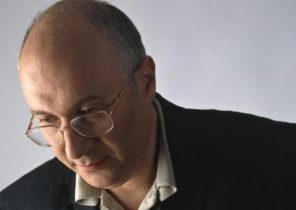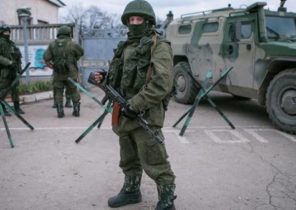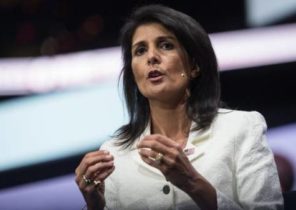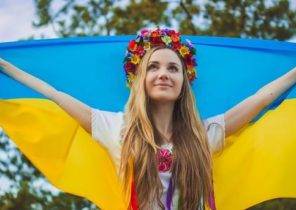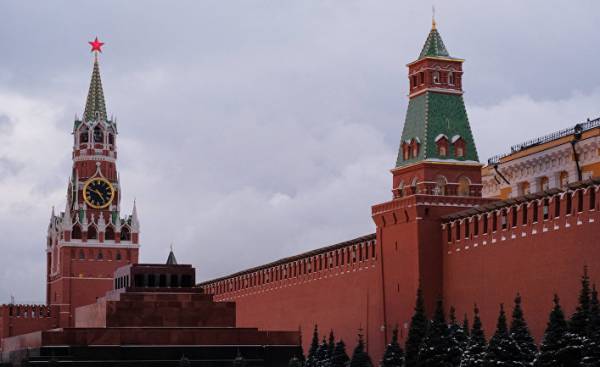
Despite the fact that it’s been more than a quarter century after the collapse of the Soviet Union, the biggest country in the world, with its history full of UPS and downs, experienced a wholly different kind of experiments and adventures, the majority of Iranians and even representatives of other countries (especially Western countries) is still unable to clearly understand the differences between the Soviet Union and the Russian Federation.
This despite the fact that for several years this country, in expressions of various experts and commentators, having lost a significant part of his identity continues in the modern world to live by their particular laws and regulations. And now quite a lot of Iranians are looking at their Northern neighbor as they used to look at him for a few years — seeing here and rebus, riddle, and mystery, and fears, and hopes.
And Moscow for the Iranians is as once the whole Soviet Union, the capital of the largest of the superpowers, and is the center of forces, ready to fight with the West and America, and the city full of myths, legends, and land — the birthplace of Lenin and Stalin.
This perception and the lack of clear boundaries [in the perception — approx. transl.] between Russia and the Soviet Union, at first glance, stems from ignorance of what happened more than 25 years. Ignorance at least that after the USSR geographic map of the world increased by 15 States, which, in turn, stems from the lack of clear and accurate information. But over time and especially as the result of the evolution that has occurred with Russia according to the results of the coming to power of Vladimir Putin, even in the minds of knowledgeable people and scientists there is a big and serious question: what really is the difference between Russia and the Soviet Union? And isn’t modern Russia is considered the Soviet Union that existed until the early 90-ies, but only state even more integral and monolithic with the geographical, climatic and human point of view?
If we try to understand and identify the defining constituent elements of the Soviet state as the elements that show its uniqueness and defines its differences from the West and Europe (and the definition of its identity, for different reasons, and bring different examples would be the definition of a comprehensive character, which will be applicable not only to the Soviet period), we see that this identity of Russia, is inherent in the Soviet past, growing and strengthening day by day in modern Russia, in particular due to the authoritarian management style of its President and others of his ideology theorists. And then the question of what is Russia today differs from the Soviet Union, even more will capture the minds of many. And will it be possible to say that current Russia retained the same essence of the former USSR, with the addition of some changes of a private nature, in the ways of the government, but retaining the same ideological structures and the mental-philosophical foundations? On the other hand, is it possible, with all these similarities and the significant matches, talk about a complete break with the traditions of the Soviet Union on the basis of all that took place a structural change?
The Soviet legacy in modern Russia in various fields, internal and external, of course, can not be invisible. Few observers and experts will be in doubt. And those who happen to be in this huge country, and who will show a little attention, will immediately be able to understand and feel. But will not escape from the observer, and the differences are also quite significant. Only a short walk through the streets of Moscow or other city of modern Russia, or a little more interaction with their people, observing their behavior, will immediately present to the observer the appearance of a completely different Russia and Russians are completely different.
Two features that should not be overlooked
Atheism and the doctrine of atheism
Over the years the population of Russia is distinguished from other peoples of the world two important features — is the idea of “religion as the opium of the people” Karl Marx, which immediately comes to mind to so many other peoples, especially the Iranians, and atheism, which is associated with this view.
Another feature associated with the socialist past, linked with the economy is a complete rejection of capitalist forms of life and property. These two features of the Russians as a people harking back to the days of socialism and a kind of criterion of their differences [from other people — approx. transl.], one can easily see and feel even a cursory acquaintance with the way of life of modern Russia. But implementing economic system based on the enrichment and satisfaction of the interests of a small group of individuals, has led to enormous social stratification, and to the fact that the streets and squares of Moscow and other large Russian cities flooded most expensive cars. And this is has very little to do with the lifestyle of the Soviet people, who lived in conditions of material scarcity. On the other hand, constantly observed the growth of religiosity, especially among young people, the growing influence of different kinds of features associated with the traditions of Christianity of the Orthodox persuasion in public relations and in state institutions — all this is already a huge gap between what was common and what was promoted in the era of socialism, with the aim of educating “generation of atheists”.
There are other differences, which indicate the formation of completely new companies as well as numerous other testimonies and examples that would be difficult to enumerate fully here.
The first study on Persian language
Dr. Abu-z-Zor Brahimi Turkomans, the current Chairman of the Organization for culture and Islamic relations, and previously lived and worked in over 66 months in Russia, the post of adviser on culture at the Embassy of the Islamic Republic of Iran, and earlier on the post of cultural attaché in Turkmenistan, in his book entitled “Similarities and differences of the Soviet and modern Russia”, found its very deep and precise understanding of the above question which is currently of very many. In addition, his book based on his own personal experiences and rich field experience in the years spent by the author on the territory of Russia. In this book the author pays the main attention to the issues of comparison and the similarities and differences between different sides of everyday life in modern Russia and in the Soviet state.
This book is the first of its kind written on this topic in Persian language. After the Preface and introductory essay is followed by two main sections called “Structural differences of the Soviet and modern Russia,” and “the Total Soviet and modern Russian civilisation: a structural analysis”, respectively.
In these two sections by the author in great detail the fundamental features of politics, Economics and economic policy, public life and cultural life both of these periods. Thus, the author gives the reader a very detailed understanding of the characteristics of two important periods in the history of our great Northern neighbor, by doing this, relying on their articles and notes, written at different times, a number of interviews and conducted “field research”. His presentation, the author builds such a way that gives much more distinction of two periods, presenting them, respectively, in the first Chapter, which covers 116 pages of the book, in General, occupies a volume of 226 pages. Issues of similarities, the author focuses on the last 80 pages.
The author, anticipating his General analysis in the initial section, before both heads, writes the following: “This work offers an explanation and interpretation of similarities and differences between the Soviet period and modern Russia, and offers original insights based on his own testimony, historical analysis, geopolitical conditions and global trends. Accordingly, first, in great detail, accompanied by documentary and personal testimonies, described the structural differences between the Soviet and the current Russian government and society, and after that understand structural similarities between them. And then, after describing all the similarities and differences between the two States on the basis of what was described in the two preceding chapters, presents a comparative analysis”.
In conclusion, in his own words, presents “spirit of the narration”, which in essence, is the final summary or comparative conclusion, the results describe the similarities and differences of the Russian and Soviet States in the following sentences: “One sentence we can say that, although Russia is not the Soviet Union, two countries have a common link, which is these same differences — sometimes they are internal-structural, and sometimes external, which lie on the surface. Russia today is quite impossible to know good without noticing and without imagining that what was previously a Soviet state and, more importantly, tsarist Russia. The spirit of our story — this is a comparative summary, which is accurate and appropriate description of the major structural features of what in time became known as the Tsar of Russia, Union of Soviet Socialist republics and the Russian Federation. This summary seems to present the most detailed way.”
“Re-creation” of tsarist Russia
Modern Russia in respect of factors shaping national identity, its control system and its society, to an even greater extent reproduces what was in tsarist Russia, rather than reminiscent of what happened in the Soviet period. Clearly show themselves special relationship of the state and the Orthodox Church, repeated emphasis on “Orthodox” identity of Russia and polarchoice economic relations, previously only based on the feudal-aristocratic formations, and now dependent on a rapidly nascent oligarchy. In international relations, again makes itself felt the expansionist nature of Russian foreign policy in the era of Imperial Russia the Russian tsars were called the saviors of Europe, in the Soviet era, the Savior of the Western world called the Red Army, and the same approaches, not priemlimie any deviations are applied in the policy of modern Russia. In principle, it seems to us, in a structural analysis and characterization of the foundations of the Soviet state and society, and also the fate of the world’s first state built on Communist principles, the analysis of the fundamentals of tsarist Russia, and subsequently contributed to the formation of the Communist regime, will be very useful to conduct a detailed analysis of the characteristics and circumstances of the evolution of this country and the specific experience of communism.
The book “the Similarities and differences of the Soviet and modern Russia”, written and published by the efforts of the publishing house “Ettelaat”, can not only be used in the process of building and decision-making in various spheres of relations between the two countries, but also be useful for those who are now engaged in analysis and research of political, social and cultural aspects of being big neighbor to the North, questions of evolution and transformation of the political system of this country. It can give the reader a unique material on which you should ponder on. And it is hoped that subsequent editions, which will take into account all possible objections, will give even more information on the above topics and will present to the attention of specialists already edited text, which will help in the widest possible fields of study.
“The Soviet Union and the Russian Federation: similarities and differences”
Dr. Abu-z-Zor Brahimi Turkomans
Publishing House “Ettelaat”
Publication format standard
The year of the first edition — 1395 [2016 — according to the traditional chronology of Iran, ed. transl.]
240 p — 10 thousand tomans [cost]
The following is the full content of this book, which is as follows: Foreword, General provisions, of the diplomacy of Russia to reform the country’s image in the world, explaining the essence of the concepts “Soviet Union” and “Russia”
The first section — “Structural differences of the Soviet and modern Russia”
Chapter one. Political structures: transforming structures based on the Communist ideology, structure based on pragmatism; religious institutions: their past and present situation; demographic issues; population growth; indigenous population of Russia; the Muslim republics; politinformation young people; the role of the population in government institutions; differences in political beliefs and “party” allegiances; the transformation of the strategy “everything for the center” strategy “common good”; the expansion of NATO in the areas of “Soviet influence”.
The second Chapter. Economic policy: fundamental tendencies of the socialist economy; major trends in modern Russian economy.
The third Chapter. The problems of society: transformation of the ethnic component; the concept of citizenship and civil rights; contemporary Russia — the West or the East?; modern Russia on the map; globalization and the national interests of Russia; community organizations; the media; the density of coverage by the media in different regions of Russia (the results of the policy of glasnost); the state radio and television broadcasting in contemporary Russia; the Muslim media in Russia; the present and the future of the Muslim media in Russia; media online; the professional organizations of journalists of Russia; home and family; sports; differentiation of social groups; tourism; level of delinquency and crime; education; health care; housing; provision of social protection.
The fourth Chapter is the issue of culture.
Section two. “The Soviet Union modern Russia: structural similarities”
Chapter one. Political structure: foreign policy — continuing the tradition of expansionism; the centralization of power and the pursuit of authoritarianism and the continuation of the traditions of the cult of personality at the head of the state; the mafia mechanisms and structures within institutions.
Chapter two. Problems of Economics: hard collectivization and centralization; the new economy; foreign investments; economic privileges and protectionism for government officials and government agencies; the scope of the shadow economy as a clear break with tradition “transparent” capitalism of the Western type.
Chapter three. Social problems: diversity of Nations and peoples; the continued diversification of the social structures; the predilection of the authorities to the security issues; strict control over society; democracy and the fate of Islam in Russia.
Chapter four. Issues of cultural and spiritual life: the priority of ideology in front of common sense in the choice of ways of behavior; the factor of personality in culture, art, literature, nostalgia for the Soviet past; the tradition of honoring and exaltation of the figures of culture, policy of culture in the Soviet period and in contemporary Russia: policy in the cultural sphere in the Soviet Union and the approach to the problems of culture in contemporary Russia; the Document “Strategy of state national policy in the Russian Federation”; the basic meaning and contents of the Document “Strategy of national policy of Russia until 2025”; the state of interethnic relations in the Russian Federation; goals, the principles, priorities and objectives of the state national policy of Russia; priorities of the state national policy of the Russian Federation; challenges in the sphere of state national policy; 3-godovoy plan of implementation of the strategy; strategy of 12 points — a study of its content; the cultural ties of Iran and Russia; peculiarities of Russian culture, Russia’s influence in the world.
Sources, illustrations.
Seyed Hossein Tabatabai served as cultural attaché of Iran in Russia




